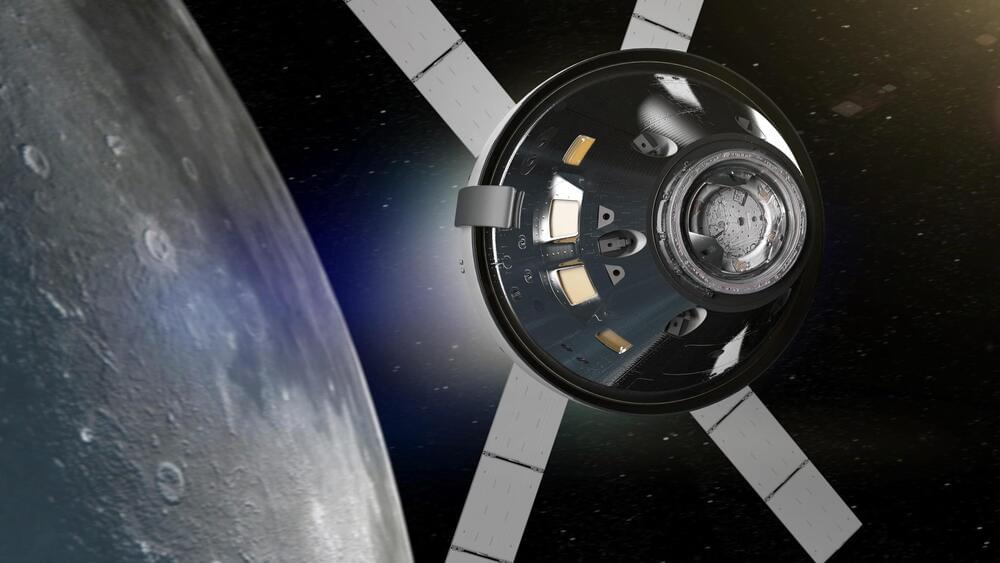SpaceX’s ambitious plans for the Starship program, including the potential Super Heavy catch attempt and the goal of 144 launches this year, could result in monumental leaps forward in the space industry, but the outcome is uncertain until it’s done Questions to inspire discussion What is SpaceX preparing for with the.
Category: space travel – Page 67

Study offers $2.1B plan to make room for SpaceX, other rocket company fleets at Port Canaveral
More Space Coast rocket launches mean a crowded fleet of support ships are already pushing Port Canaveral’s limits. So the state commissioned a study that suggests a $2.1 billion solution to give companies such as SpaceX and Blue Origin dedicated places to dock.
Space Florida, the state’s aerospace finance and development authority, released Thursday the Florida Spaceport System Maritime Intermodal Transportation Study that’s been in the works for more than a year.
“It was really important for us to make sure we had every stakeholder input throughout the process,” said Space Florida president and CEO Rob Long.

Chemist explores the real-world science of Star Wars
A professor at the University of Warwick is exploring the chemistry of the galaxy far, far away this Star Wars Day, May the 4th.
Science fiction is meeting science fact, as Professor Alex Baker discusses the captivating inspiration real-world reactions have had on the Star Wars universe.
The chemist from the University of Warwick explores what may underpin the freezing of Han Solo, the colors of lightsabers, the reactions that power star ships and much more.
A Remarkable New Thruster Could Achieve Escape Velocity—and Interplanetary Travel
Scientists are on the brink of a propulsion breakthrough.

NASA’s Artemis II Orion Spacecraft Passes the Test: Completes Electromagnetic Testing for Moon Mission
NASA ’s Artemis II mission’s Orion spacecraft underwent successful electromagnetic testing to confirm its readiness for moon missions.
NASA ’s Artemis II mission’s Orion spacecraft underwent successful electromagnetic testing to confirm its readiness for moon missions. On Friday, April 26, engineers completed a series of electromagnetic tests on the integrated Orion crew and service module for NASA’s Artemis II mission inside the Neil A. Armstrong Operations and Checkout (O&C) Building at the agency’s Kennedy Space Center in Florida.
During testing, engineers subjected the spacecraft to electromagnetic energy using wave guides, amplifiers, and antenna horns while inside an altitude chamber.
Fusion in Space: New Plasma Thruster Tested Successfully
Try Opera browser FOR FREE here https://opr.as/eiiu-sabine-hossenfelder Last week I saw a lot of headlines about a space propulsion system that uses nuclear fusion. The news comes from a company by name RocketStar Inc. which announced in a press release that they have “reinvented” spacecraft by releasing the “world’s first fusion-enhanced space thruster, the FireStar™ Fusion Drive. They claim that the FireStar TM Fusion Drive improves their water powered pulsed plasma thruster by harnessing aneutronic nuclear fusion by 50%. In this video I explain what this all means. 🤓 Check out my new quiz app ➜ http://quizwithit.com/ 💌 Support me on Donorbox ➜ https://donorbox.org/swtg 📝 Transcripts and written news on Substack ➜ https://sciencewtg.substack.com/ 👉 Transcript with links to references on Patreon ➜ / sabine 📩 Free weekly science newsletter ➜ https://sabinehossenfelder.com/newsle… Audio only podcast ➜ https://open.spotify.com/show/0MkNfXl… 🔗 Join this channel to get access to perks ➜
/ @sabinehossenfelder 🖼️ On instagram ➜
/ sciencewtg #science #sciencenews #technews #technews #space #nuclear
An Engineer Says He’s Found a Way to Overcome Earth’s Gravity
This new propulsion system could rewrite the rules of spaceflight—not to mention completely defy conventional physics.
Peering Into the Heart of Clouds: NASA’s CloudSat Wraps a Revolutionary Journey
Over the course of nearly two decades, its powerful radar provided never-before-seen details of clouds and helped advance global weather and climate predictions.
CloudSat, a NASA mission that peered into hurricanes, tallied global snowfall rates, and achieved other weather and climate firsts, has ended its operations. Originally proposed as a 22-month mission, the spacecraft was recently decommissioned after almost 18 years observing the vertical structure and ice/water content of clouds.
As planned, the spacecraft — having reached the end of its lifespan and no longer able to make regular observations — was lowered into an orbit last month that will result in its eventual disintegration in the atmosphere.

Interstellar Peptides Point to Extraterrestrial Origin of Life’s Building Blocks
Peptides can form on cosmic dust despite water presence, challenging previous beliefs and suggesting a possible extraterrestrial origin for life’s building blocks.
Peptides are organic compounds that play a crucial role in many biological processes, for example, as enzymes. A research team led by Dr. Serge Krasnokutski from the Astrophysics Laboratory at the Max Planck Institute for Astronomy at the University of Jena had already demonstrated that simple peptides can form on cosmic dust particles. However, it was previously assumed that this would not be possible if molecular ice, which covers the dust particle, contains water – which is usually the case.
Now, the team, in collaboration with the University of Poitiers, France, has discovered that the presence of water molecules is not a major obstacle for the formation of peptides on such dust particles. The researchers report on their findings in the journal Science Advances.
Fermi Paradox: The Cambrian Explosion Solution and Fossil Arks
An exploration of a potential solution to the Fermi Paradox within the Cambrian explosion period of geologic history, with an aside about fossil preservation in space.
My Patreon Page:
/ johnmichaelgodier.
My Event Horizon Channel:
/ eventhorizonshow.
Music: